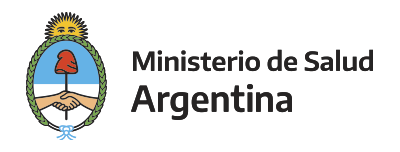Please use this identifier to cite or link to this item:
http://sgc.anlis.gob.ar/handle/123456789/2365| DC Field | Value | Language |
|---|---|---|
| dc.contributor.author | Degiuseppe, Juan Ignacio | es |
| dc.contributor.author | Roitman, Karina L | es |
| dc.contributor.author | Rivero, Karina | es |
| dc.contributor.author | Stupka, Juan A. | es |
| dc.date.accessioned | 2021-09-21T21:36:46Z | - |
| dc.date.available | 2021-09-21T21:36:46Z | - |
| dc.date.issued | 2021-08 | - |
| dc.identifier.uri | http://sgc.anlis.gob.ar/handle/123456789/2365 | - |
| dc.description | Fil: Degiuseppe, Juan I. Administración Nacional de Laboratorios e Institutos de Salud "Dr. Carlos G. Malbrán". Laboratorio de Gastroenteritis Viral, INEI-ANLIS; Argentina. | es |
| dc.description | Fil: Roitman, Karina L. Administración Nacional de Laboratorios e Institutos de Salud "Dr. Carlos G. Malbrán". Laboratorio de Gastroenteritis Viral, INEI-ANLIS; Argentina. | es |
| dc.description | Fil: Rivero, Karina A. Administración Nacional de Laboratorios e Institutos de Salud "Dr. Carlos G. Malbrán". Laboratorio de Gastroenteritis Viral, INEI-ANLIS; Argentina. | es |
| dc.description | Fil: Stupka, Juan A. Administración Nacional de Laboratorios e Institutos de Salud "Dr. Carlos G. Malbrán". Laboratorio de Gastroenteritis Viral, INEI-ANLIS; Argentina. | es |
| dc.description.abstract | In developing countries, the acute gastroenteritis outbreaks submitted for viral testing are limited due to deficient surveillance programs. The aim of this study was to analyze a passive surveillance strategy for monitoring the molecular epidemiology of norovirus (NV) and counterbalance the genetic diversity data gap. Laboratory-confirmed rotavirus negative sporadic stool samples (N = 523) collected between 2010 and 2017 from children were selected from our archival collection and were tested for NV and sequencing was performed on the positive samples. Passive surveillance information was compared with the genetic diversity data that was available from local norovirus-confirmed gastroenteritis outbreaks. Each year, norovirus detection in the sporadic samples ranged from 12 to 29%. GI and GII norovirus were detected in 7 (1.3%) and 101 (19.3%) of the specimens, respectively. Four GI and six GII capsid genotypes were identified. Six out of 9 strains detected in the NV outbreaks panel were also identified in the set of sporadic samples either coincidently in the same year, the previous or the later year. Also, this set of samples depicted even better the circulating epidemic strain. Thus, implementing norovirus testing and genotyping in stool samples collected with other purposes represent a suitable strategy for providing genetic diversity information. | es |
| dc.language.iso | en | es |
| dc.relation.ispartof | Journal of infection and public health | es |
| dc.subject | Países en Desarrollo | es |
| dc.subject | Infecciones por Caliciviridae | es |
| dc.subject | Diversidad de Anticuerpos | es |
| dc.subject | Anticipación Genética | es |
| dc.title | Norovirus passive surveillance as an alternative strategy for genetic diversity assessment in developing countries | es |
| dc.type | Artículo | es |
| dc.identifier.doi | 10.1016/j.jiph.2021.05.016 | - |
| item.openairetype | Artículo | - |
| item.openairecristype | http://purl.org/coar/resource_type/c_18cf | - |
| item.grantfulltext | open | - |
| item.cerifentitytype | Publications | - |
| item.fulltext | With Fulltext | - |
| item.languageiso639-1 | en | - |
| crisitem.author.dept | Maestría en Microbiología Molecular UNSM-ANLIS | - |
| crisitem.author.parentorg | Centro Nacional Red de Laboratorios (CNRL) | - |
| Appears in Collections: | Publicaciones INEI | |
Files in This Item:
| File | Description | Size | Format | |
|---|---|---|---|---|
| 1-s2.0-S1876034121001520-main.pdf | 638.45 kB | Adobe PDF | View/Open |
Page view(s)
117
checked on Dec 13, 2025
Download(s)
16
checked on Dec 13, 2025
Google ScholarTM
Check
Altmetric
Altmetric
Items in DSpace are protected by copyright, with all rights reserved, unless otherwise indicated.

